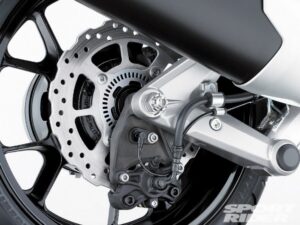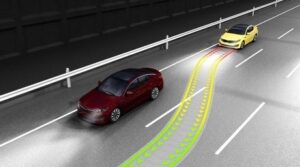The brake system of your vehicle is by a wide margin the main safety system that it has. Having the option to slow down or stop at a moment’s notice will assist with staying away from an incident or accident. Inappropriately working brakes won’t do the work they are intended to do and won’t be as powerful when required, particularly in a panic stop circumstance.
Ordinary Brake Inspection:
Brakes should be consistently reviewed, we suggest having your trusted repair facility routinely test drive the vehicle to see how the brake system functions.
In a visual brake review, the following should be performed:
1. Estimating pad and shoe thickness.
2. Examine for proper routing and situation of the brake and antilock brake sensors.
3. Examine the wheel cylinder brake lines, hoses, and brake master cylinder for leaking.
4. Look at rotors for run and problem areas.
5. Check equipment to ensure it is working and changed appropriately.
6. Examine calipers for wear, free movement, and fluid leaks.
7. Really take a look at the level and state of the brake fluid.
8. Check for even wear of the brake pad and shoes.
These parts should be looking great and turning out appropriately for the vehicle to have a 100% brake system adequacy while driving.
For example, something that appears to be basic is the brake fluid, it can get polluted over the long run with the retention of dampness and copper,
this can diminish the viability of the hydrodynamics inside your brake system making a less responsive brake pedal the touch or feel, subsequently
creating a slight setback or decrease in slowing down power.
Check Brakes Every 6 Months or 6,000 Miles
Anti-Lock Braking System
Anti-Lock Braking System is presently found on each bike above 125cc. ABS essentially prevents the locking of the back tire during sudden brakes. It further forestalls the motorcycle to slip. Anti-Lock Braking System comes on the front disc and rear disc also. In an Anti-Lock Braking System-equipped motorcycle, assuming that you suddenly press the brakes, the wheels will keep turning with stopping the motorcycle simultaneously.

Combined Braking System
Combined Braking System is the most reasonable wellbeing feature here. It comes in commuter bikes, under 125cc. A combined braking system isn’t quite as amazing as Anti-Lock Braking System.
In this instrument, while applying the rear brake, the front brake is naturally applied, which lessens the stopping distance. Bikes of 100-125cc don’t run at high velocities, hence precluding the Anti-Lock Braking System choice.

Traction Control
Wet, smooth, or sloppy streets normally have low grating. While speeding upon such roads, one may frequently observe their motorcycle slipping and unstable. That is on the grounds that the traction of the motorcycle is not good.

Vehicle Stability Control
Vehicle Stability Control is basically the ultimate safety feature, which additionally includes traction control. With appropriate electronic guides, the system examines the lean points, riding styles, and speed increase force of the rider.
In view of the customary riding style, the system sends brakes and traction control, without telling the rider. Done during slowing down just as cornering, the system guarantees the most extreme security and slowing down.

Wheelie Control
Presently, this is an exceptionally top-notch highlight and isn’t found in your standard bike. Principally seen in Ducati motorcycles, Wheelie control guarantees that sudden speed increases won’t lift the front tires.
In a 1000-1200cc four-cylinder superbike, the speed increase power is very impressive. Indeed, even with the smallest of choke contorting, the motorcycle will race ahead.

Conclusion
We suggest having your brake system examined with each oil change or at least like 6 months or about every 6,000 miles.
Then, at that point, if the investigation uncovers any issues with the brake system for your own security and the security of others, have it fixed to
keep the brake system of your vehicle working at 100% adequacy. safety is the way to prevent accidents.
Cheerful motoring!
